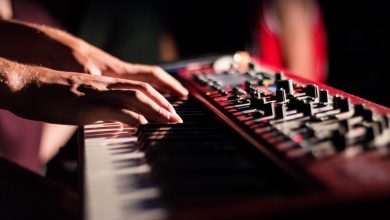Musical notation is the language of music, allowing composers, musicians, and performers to communicate and reproduce musical ideas. Notes are fundamental elements of musical notation, representing specific pitches and durations. In this article, we will delve into the concept of musical notes, their fundamental values, and how they contribute to creating rhythm and melody in music.
What is a Note?
A musical note is a symbol used to represent a specific pitch and duration in written music. Notes provide musicians with essential information about when to play a specific pitch and for how long. Just as letters form words in written language, notes combine to create melodies and harmonies in music.
Basic Note Values:
1. Whole Note (Semibreve):
- The whole note is an open oval shape without a stem.
- It represents the longest duration among common note values.
- In 4/4 time, a whole note typically lasts for the entire duration of a measure.
2. Half Note (Minim):
- The half note has a hollow oval shape with a stem.
- It represents half the duration of a whole note.
- In 4/4 time, a half note typically lasts for half a measure.
3. Quarter Note (Crotchet):
- The quarter note is a solid oval shape with a stem.
- It represents a quarter of the duration of a whole note.
- In 4/4 time, a quarter note typically lasts for one-fourth of a measure.
4. Eighth Note (Quaver):
- The eighth note has a solid oval shape with a stem and a single flag.
- It represents half the duration of a quarter note.
- In 4/4 time, an eighth note typically lasts for one-eighth of a measure.
5. Sixteenth Note (Semiquaver):
- The sixteenth note has a solid oval shape with a stem and two flags.
- It represents half the duration of an eighth note.
- In 4/4 time, a sixteenth note typically lasts for one-sixteenth of a measure.
6. Thirty-Second Note (Demisemiquaver):
- The thirty-second note has a solid oval shape with a stem and three flags.
- It represents half the duration of a sixteenth note.
- In 4/4 time, a thirty-second note typically lasts for one-thirty-second of a measure.
Musical notes are the building blocks of musical composition, enabling composers to convey their artistic visions and performers to bring those visions to life. Understanding the basic note values is essential for reading, interpreting, and playing written music accurately. By mastering these fundamental elements of musical notation, musicians can explore the rich tapestry of melodies, rhythms, and harmonies that comprise the captivating world of music.
Embarking on a Musical Journey: The Joys and Techniques of Self-Taught Music Learning
Music, with its enchanting melodies and rhythms, has the power to evoke emotions, inspire creativity, and provide a sense of accomplishment. While formal music education is valuable, embarking on a journey of self-taught music learning can be equally rewarding. In this article, we will explore the joys of self-taught music learning, share effective techniques, and offer guidance for those eager to unlock their musical potential.
Benefits of Self-Taught Music Learning:
1. Personalized Pace: Self-taught learning allows you to progress at your own pace, focusing on areas that interest you the most and spending more time on challenging aspects.
2. Flexibility: You have the freedom to choose your practice schedule, instruments, genres, and styles of music. This flexibility promotes a sense of autonomy and enjoyment.
3. Creative Expression: Self-taught learning encourages experimentation and creative exploration, enabling you to develop a unique musical voice.
4. Resource Utilization: The wealth of online tutorials, sheet music, videos, and apps makes self-learning more accessible than ever before.
Effective Techniques for Self-Taught Music Learning:
1. Choose Your Instrument:
- Select an instrument that resonates with you and aligns with your musical goals.
2. Set Clear Goals:
- Define achievable short-term and long-term goals, such as learning a specific song, mastering a technique, or improvising.
3. Establish a Routine:
- Create a consistent practice routine that suits your schedule and dedicating focused time to practice.
4. Utilize Online Resources:
- Explore online tutorials, instructional videos, and interactive platforms tailored to your instrument and skill level.
5. Learn Music Theory:
- While not mandatory, understanding basic music theory can enhance your understanding of melodies, chords, and harmonies.
6. Break It Down:
- Break complex pieces or techniques into smaller sections, practicing them incrementally before putting them together.
7. Record Yourself:
- Recording your practice sessions allows you to track progress, identify areas for improvement, and appreciate your growth.
8. Embrace Patience and Persistence:
- Learning music requires time and dedication. Embrace setbacks as opportunities to learn and grow.
9. Seek Feedback:
- Share your progress with fellow musicians or mentors, and welcome constructive feedback to refine your skills.
10. Enjoy the Process: – Celebrate your achievements, no matter how small, and remember that the journey itself is immensely gratifying.
Embarking on a self-taught music learning journey is a rewarding endeavor that empowers you to connect with music on a personal and creative level. With dedication, discipline, and a passion for learning, you can explore the depths of musical expression, master new skills, and cultivate a lifelong love for playing and creating music. By embracing the freedom, flexibility, and joy that self-taught music learning offers, you embark on a musical adventure that is uniquely yours.

















